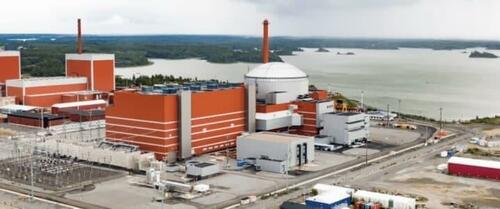By Alex Kimani of OilPrice.com
Summary
-
Currently, there are thousands of metric tons of used solid fuel from nuclear power plants worldwide and millions of liters of radioactive liquid waste from weapons production sitting in temporary storage containers.
-
Finland has built the world’s first deep-earth repository where it will bury nuclear waste for 100,000 years starting 2026.
-
About a dozen European countries, including Finland and Switzerland, are planning deep geological repositories for their nuclear waste.
For decades, nuclear energy has been treated as the black sheep of the energy universe thanks to major drawbacks including high costs, high-profile nuclear accidents and hazardous by-products of nuclear energy production. Currently, there are thousands of metric tons of used solid fuel from nuclear power plants worldwide and millions of liters of radioactive liquid waste from weapons production sitting in temporary storage containers, some of which have begun leaking their toxic contents. Nuclear waste is notorious for the fact that it can remain dangerously radioactive for many thousands of years. Thankfully, the world has just come closer to finding a permanent solution to its nuclear menace: Finland has built the world’s first deep-earth repository where it will bury nuclear waste for 100,000 years starting 2026.
Dubbed ‘‘Onkalo’’, the repository is entombed in a bedrock more than 400 meters below the forests of southwest Finland. The facility sits atop a warren of tunnels sited next to three nuclear reactors on the island of Olkiluoto, approximately 240 kilometers from the capital of Helsinki. The Onkalo project is based on the so-called “KBS-3” method developed by the Swedish Nuclear Fuel and Waste Management Company. KBS-3 is based on a multi-barrier principle whereby if one of the engineered barriers were to fail, the isolation of the radioactive waste is not compromised.
“Basically, the Onkalo project is that we are building an encapsulation plant and disposal facility for spent fuel. And it’s not temporary, it’s for good,” Pasi Tuohimaa, head of communications for Posiva, told CNBC via videoconference. Posiva is tasked with the responsibility of handling the final disposal of spent nuclear fuel rods at Onkalo.
The first-of-its-kind geological disposal facility has been hailed as a game-changer that’s likely to increase the appeal of nuclear energy, “Having a solution for the final disposal of spent fuel was like the missing part of the sustainable lifecycle for nuclear energy,” Tuohimaa said. According to Finnish Climate Minister Kai Mykkänen, Onkala provides the world with a model for sustainable nuclear waste management.
Deep Geological Repositories
But Finland is not alone. About a dozen European countries, including Finland and Switzerland, are planning deep geological repositories for their nuclear waste. Here in the U.S., government officials have proposed storing the country’s nuclear waste in a repository beneath Yucca Mountain in Nevada about 300 m below ground level and 300 m above the water table. However, this idea has gone in and out of favor with changes in the presidency. For now, nuclear waste simply accumulates mainly where it’s generated--at the power plants and processing facilities, with some having been sitting in interim storage since the 1940s. In Hanford alone, more than 200 million liters of radioactive liquid waste--a mix of liquid, sediment, and sludge--has been sitting in tanks waiting to be processed. Obviously, storing this kind of high-level liquid waste indefinitely is not sustainable.
Finland’s Onkalo is likely to bring nuclear energy a step closer to mainstream acceptance. According to the World Nuclear Association, nuclear energy currently provides about 9% of the world’s electricity. However, last year at the COP28 summit, 22 countries including the U.S., Canada, the UK, and France pledged to triple nuclear power capacity by 2050 (from 2020 levels).
Onkalo is also likely to increase the appeal of small modular nuclear reactors (SMRs). SMRs are advanced nuclear reactors with power capacities that range from 50-300 MW(e) per unit, compared to 700+ MW(e) per unit for traditional nuclear power reactors. SMRs can be sited in locations not suitable for larger nuclear power plants, such as retired coal plants; offer significant savings in cost and construction time, and can also be deployed incrementally to match increasing power demand.
However, studies like these can potentially throw a spanner in the works and increase public resistance to SMRs.
“Our results show that most small modular reactor designs will actually increase the volume of nuclear waste in need of management and disposal, by factors of 2 to 30 for the reactors in our case study. These findings stand in sharp contrast to the cost and waste reduction benefits that advocates have claimed for advanced nuclear technologies,” said study lead author Lindsay Krall, a former MacArthur Postdoctoral Fellow at Stanford University’s Center for International Security and Cooperation (CISAC). The study found that one of their key attractions--small size--is also their major Achilles heel because SMRs experience more neutron leakage than conventional reactors, which in turn affects the amount and composition of their waste streams. The study also discovered that spent nuclear fuel from SMRs will be discharged in greater volumes per unit of energy produced and can be far more complex compared to waste from conventional reactors.
Thankfully, the advent of deep geological repositories could improve the bull case for SMRs.
